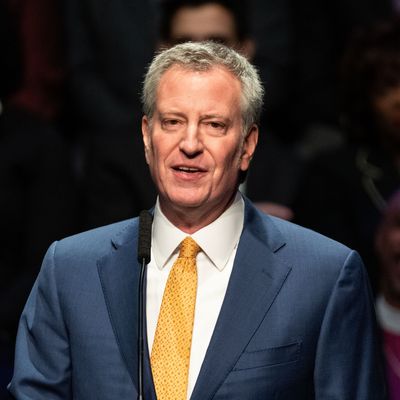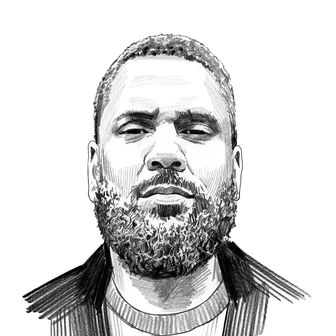
Bill de Blasio’s efforts to integrate New York City’s specialized public high schools are in limbo at the moment, pending legal challenges and resistance from parents of current students. The New York Times took the opportunity on Wednesday to publish a series of interviews with Asian-American alumni regarding the mayor’s hotly debated proposals.
One response in particular stands out: that of Soo Kim, who graduated Stuyvesant High School in 1993, attended Princeton University, and is now president of Stuyvesant’s alumni association. Kim opposes the mayor’s plan — which includes a more inclusive admissions process that I will describe in greater detail later — but his take on the conversation about race and segregation that surrounds it is also worth a closer look.
“How is this possible, that people are saying we’re segregated, we’re Jim Crow,” Kim told the Times. “These words are too harsh. It makes me feel like I’m a bad person.”
This is a striking and revelatory assessment of what’s happening. New York City officials admitted long ago to having a segregated public school system, and committed to integration. A 1955 study — conducted the year after the U.S. Supreme Court decided Brown v. Board of Education — found that 42 city elementary schools were more than 90 percent black and Puerto Rican, and nine middle schools were more than 85 percent. Though these 51 facilities comprised just 8 percent of the city’s elementary and junior high schools at the time, the extremity of their divisions fueled some soul-searching by the board of education. “[Public] education in a racially homogenous setting is socially unrealistic and blocks the attainment of goals of democratic education,” New York City’s Board of Education declared.
But the board’s commitment to integration eroded over the decades amid declining political will, white flight, and resistance from white families. Today, New York State is the most segregated in the nation for black students, with 64 percent attending schools that are less than 10 percent white. Half of New York City’s schools are now more than 90 percent black and Latino.
Segregation is a matter of fact, not of feeling, and Kim’s claim that it is too harsh a descriptor because it makes him feel bad belies that it is the literal state of affairs, not a rhetorical effort to assign guilt to him personally. Yet his assessment is indicative of a broader cultural trend, most prevalent among white conservatives, that considers being called “racist” worse than actual racism. Maine governor Paul LePage, a Republican and flagrant bigot who in 2016 described people of color as “the enemy,” recently equated being called a racist with “calling a black man the N-word or a woman the C-word. It just absolutely knocked me off my feet.” The level of delusion on display is stunning, but like Kim’s comments, has the added effect of reducing racism to an abstraction whose stakes are the feelings and social standing of those often best protected from its negative consequences, rather than the experiences of the most vulnerable.
Nevertheless, the opinions of Asian communities in New York have been a vital part of the discussion for a reason, and not all of those interviewed by the Times for Wednesday’s story shared Kim’s outlook. Asians comprise 62 percent of the specialized high schools’ students despite being just 16 percent of the city’s student population. Their predominance at institutions like Stuyvesant and Brooklyn Tech can be attributed almost entirely to their success on the Specialized High School Admissions Test — a standardized exam available to all city middle-schoolers that has for decades been the sole admissions criteria for the specialized schools.
Part of de Blasio’s plan includes scrapping the test altogether and instead offering admission to the highest-performing 7 percent of students at every middle school in the city. Black and Latino children are nearly 70 percent of the city’s student population, which means that eliminating the SHSAT would likely cut the specialized schools’ Asian student population in half and increase their black student population fivefold, according to estimates.
Predictably, resistance has been fierce, particularly among white parents of current students and advocates for Asian students. “You people are proposing a grand experiment on our children,” said one white parent at a heated public forum in December. Another implored those gathered to “[put] yourself in the place of the black and Hispanic kids who are there because of counting methods,” implying that said kids would be out of their depth and unprepared for the competition.
The major complaint from Asian advocates has been that their communities were not consulted prior to the proposal. This indignation illustrates, if nothing else, the level of investment and sense of ownership that defines many Asians’ relationship to the test. Citywide, Asian New Yorkers have the highest poverty rates of any racial demographic, at 24.1 percent, and have long relied on the test and its consequent access to the city’s high-performing academic institutions as a means of upward mobility. “[Something] like pure meritocracy” is how Wesley Yang described the current system for New York in 2011 — focused solely on the results of an exam that anybody can study for, and unconcerned with any “formula to encourage ‘diversity’ or any nebulous concept of ‘well-roundedness’ or ‘character.’”
But access to such opportunity should not be a monopoly. “[One] thing I can’t accept is when they say things like, ‘Our kids have worked hard. We deserve this,’” Brooklyn Tech graduate Tasfia Rahman told the Times. “The unspoken thing is that other kids in other families don’t deserve this.” As I have written before, school resources in America are distributed and hoarded according to race. And even though Asian students in New York face barriers to accessing quality educational resources — especially in poor immigrant communities — to say that they deserve a greater share of that access on the basis of a single test, and at the expense of black and brown communities that might be even more deeply disadvantaged, betrays the promise of equitable public education for all children that New York City made more than 50 years ago.
Yet this perception of deservedness remains the metric used to dictate access to these schools. It is the reason why Kim can justify maintaining a system that grants disproportionate access to Asian-American children, while dismissing its negative effects — like the continued relegation of black and brown children to substandard school conditions — as the province of his personal feelings rather than a material phenomena with material consequences. Inequality may run rampant in the United States, but it is by no means unavoidable — not in society writ large, and certainly not in public education.






























